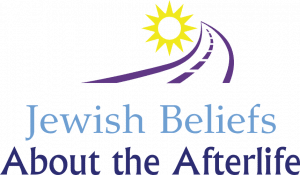The Book of Enoch is found in the later writings which were not included in the Hebrew Bible. They are found in the books known as the Apocrypha and the Pseudepigrapha. These books were originally written in Hebrew, Aramaic and Greek. This body of literature was written specifically for the Hellenistic Jew. (The more secular Jews living under Greek influence.) But Enoch contains an important figure who never officially died. Although he was referenced in Genesis, the writings about Enoch contain a lot of information about the development of afterlife in Jewish and Christian belief.
The Apocrypha and Pseudepigrapha are writings that were preserved in the Catholic Bible. However, they were not canonized in the Hebrew Bible. They still contain important stories which are relevant and important to Judaism. For instance, the story of Hanukkah is found in the Book of Maccabees. This Book is NOT in the Tanakh, but rather preserved in the Apocrypha.
The Book of Enoch
But back to the Book of Enoch and its importance in our understanding of Jewish afterlife. The author of the Book of Enoch was purported to be a Hasid, or pious Jew. ( This definition is not to be confused with the modern Hasidim from Europe. These early first period Hasids were religiously pious Jews. They were purported to be antagonistic toward the Hellenistic Jews who were not as religiously observant.) The author’s premise about Enoch is that Adam was not to blame for Man’s suffering. (Despite what it says in Torah.) But rather, it was because of the lust of the angels for the daughters of man. (See the narrative in Genesis 6:1-7) And in the Book of Enoch, we see for the first time, distinctions in morality in Sheol.
Unlike the neutral, amorphous place, in Enoch, Sheol was divided into three regions: One for the righteous and two for the wicked. The wicked who escaped punishment on earth would now be punished in Sheol. On judgment day, they would be tormented in Genhenna. However, the righteous would rise in body and live in the Messianic era in Jerusalem. Here, in Jerusalem in the new world, they can eat from the tree of life. (Shades of Genesis story.) In the Book of Enoch, only the righteous among the dead would be raised up while the wicked would remain in Sheol. Sheol in the Book of Enoch, was more of a depiction of the Christian view of Hell, complete with fire, chains and darkness.
Second Enoch
Another Book of Enoch (titled “The Book of the Secrets of Enoch”) describes a long and detailed version of the seven levels of heaven. This book forecasted that the world would survive for six thousand years (based on the biblical version of the creation story where each day lasts a thousand years.) II Enoch then predicts a thousand years of rest which corresponds to Shabbat. When this time period ends, eternity begins. At this time, judgment will occur and those who were rebellious will be tormented in eternity and the righteous would ascend to the higher levels of heaven.
For those who have heard the phrase, “I’m in seventh heaven!” This seven levels of heaven concept is based on the II Book of Enoch. Later Jewish teaching of how we ascend to higher levels of Heaven is based on this early teaching – but it’s very much a minority topic of opinion.
However, these books clearly had more influence on the Christian belief in the afterlife and the concept of Purgatory and Hell, than Judaism. However, if we believe that no civilization lives in a vacuum, we can see the influence and development of each other’s belief systems.
Resurrection
So I’m sure by now you’re wondering – Okay, I get the Hell references, but what about the Resurrection of the Dead idea? Where did that come from? And to that I say, “Great question!” And that is what the next blog will be about. We will be exploring the Book of Daniel from Tanakh, a book which probably should not have made it into the Hebrew Bible, because it was so different than any of the books of the canonical Tanakh. And yet, in Daniel, we will find the concept of bodily resurrection which seems so antithetical to Judaism. Or is it? Stay tuned and I’ll write more soon!


